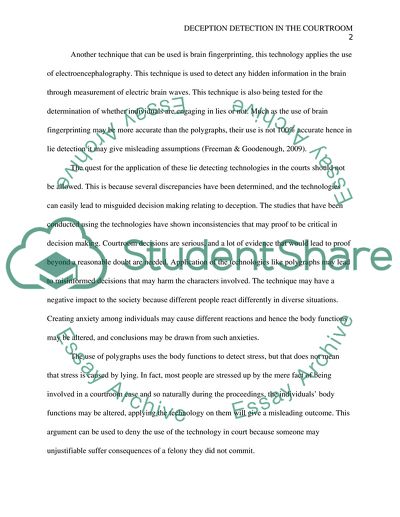Cite this document
(“Deception Detection in the Courtroom Essay Example | Topics and Well Written Essays - 1000 words”, n.d.)
Retrieved from https://studentshare.org/philosophy/1702567-deception-detection-in-the-courtroom
Retrieved from https://studentshare.org/philosophy/1702567-deception-detection-in-the-courtroom
(Deception Detection in the Courtroom Essay Example | Topics and Well Written Essays - 1000 Words)
https://studentshare.org/philosophy/1702567-deception-detection-in-the-courtroom.
https://studentshare.org/philosophy/1702567-deception-detection-in-the-courtroom.
“Deception Detection in the Courtroom Essay Example | Topics and Well Written Essays - 1000 Words”, n.d. https://studentshare.org/philosophy/1702567-deception-detection-in-the-courtroom.


